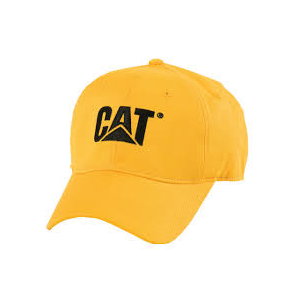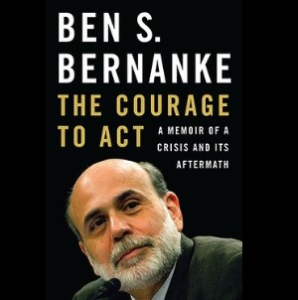By Charles H. Green
This week is the one when we celebrate our abundance, and tomorrow the nation hopefully recognizes the fifth annual ‘Small Business Saturday’ in a robust sort of way, led by legions of shoppers invading mom & pop stores with Amex cards in hand. I’m weighing in to support that effort with my own ‘small manifesto about small business’ as a reminder to small business lenders why our work is so important.
First of all, as is similar to politics, all business is small. Sure, I know that much commerce  ends up fairly large, like purchasing a new Boeing 737 priced between $51- $87 million. But while it’s hard to imagine that number as ‘small,’ remember that it’s comprised of hundreds of millions of small business transactions, from the finite number of nuts and bolts machined, windows and seats manufactured, and the transportation of these many parts to the hundreds of distribution warehouses, assembly plants and hangers spread across 50 states to produce these aircraft.
ends up fairly large, like purchasing a new Boeing 737 priced between $51- $87 million. But while it’s hard to imagine that number as ‘small,’ remember that it’s comprised of hundreds of millions of small business transactions, from the finite number of nuts and bolts machined, windows and seats manufactured, and the transportation of these many parts to the hundreds of distribution warehouses, assembly plants and hangers spread across 50 states to produce these aircraft.
It’s natural that my career was spent working with small business owners in that I grew up in a household that owned one. Our evening meal often doubled as a ‘board’ meeting of a small town dry cleaning business. The gravy was passed over discussions about customer service issues (“the customer is always right!”), the rising cost of supplies (particularly during ‘70s oil embargo) and the weekly payroll. My parents took great pride in paying their longest-serving employee +$.10 over the $2.20 minimum wage.
Tribute to Main Street
Today the face of small business has changed dramatically. In that small hamlet of Piedmont AL where I grew up, the roughly 9-block town center formerly contained a Ben Franklin Five & Dime store, Western Auto, Rexall Pharmacy, and Kwik Chek grocery. All of these recognizable names had multiple local competitors and were served by two single-location, locally-owned banks. Those store brands are practically extinct today, when compared to their former prevalence across the fruited plains.
Why? Big box stores for the most part. Scaling the delivery of goods/services first gave us the ‘supermarket’ to compete with those idyllic small 1,000 s.f. Main Street grocers, convenience stores in place of the 3-pump gas station, and the reduction of pharmacists from a genuine apothecary to a licensed pill salesperson representing third-party insurance companies. Franchise retail companies like Dollar General and Dick’s Sporting Goods swapped small town entrepreneurship for a crack at national co-op advertising.
WalMart, Home Depot, Walgreens and Target are generally well-stocked, competitively priced, and nearby, but murdered tens of thousands of small, Main Street businesses in their rise to become household names that fiercely compete to sell us largely the same things. Yes, you can find dishwashing soap and light bulbs in all four stores.
And recognize that my thinking is more than mere sentimentality over the loss of a five-stool soda fountain at Purdy’s Pharmacy, the smell of fresh apples at the door of Harbin Morgan’s Grocery, or a walkable business district where you could find most of everything you needed within a half-block of your car.
What’s really lost from those days on Main Street is what the big business cannot scale or deliver: good customer service, relative convenience, and the unique, intimate experience of a smaller retailer. When shopping in a smaller store owned by a sole proprietor, it’s hard to be ignored when trying to find something, with the owner often serving as the salesperson helping you. Sure, there’s sometimes the irritation of being overly-attended to, but that’s not nearly as frustrating as wandering around a megastore without finding a store employee to take your money when trying to buy something.
Nothing is constant, except change
Pulling up to a parking space 30-feet from the store’s entrance sure beats circling two levels of a parking deck ahead of a 300-yard walk into a mall where you need a map to find where you’re going. Inside a smaller store, customers can find a unique selection of goods that were curated by the owner’s hand-picked choices at a regional merchandise mart. In big stores, you wander through a replica of the same big store you probably visited elsewhere, with the exact displays, fragrances and hard-to-find salesperson as in their other 3,000 stores.
Scaling retail companies extracted profits out of Main Street and gave them to distant shareholders and pension funds. Worse, the resulting big box jobs–of which fewer survived than originally on Main Street–shaved salaries, benefits and customer care out of thousands of cities, and put many folks on public assistance. National retailers answer to Wall Street rather than customers, which is ironic since you have to work so hard to find someone to pay.
Supermarket? Call me old-fashioned, but I would actually welcome a return to the days when I didn’t have 300 soft drink choices on one 200-foot aisle, and maybe had to go to a second store for that unique ginger beer that calms my bourbon. Who needs 25 brands of yogurt or so many temptations on the checkout lane?
I know–there’s no going back and you can’t rewrite history, but of course Sam’s Club and CVS are also not the end of the story. Technology and the internet have begun changing retailing in interesting ways ever since Amazon.com went live. Small Main Street businesses can offer their unique goods through online portals if they want to, and actually compete with marketing that’s accessible to all.
So, what to do?
Yelp! and TripAdvisor offer a path for small, locally-owned restaurants, lodges and retailers to compete with the big boys head-to-head, particularly in smaller markets. Example, I spent a recent weekend in Dublin GA, where highest-ranking restaurant was the Southern Heritage BBQ, beating out better known, national franchises like Applebee’s, Red Lobster and Longhorn Steakhouse.
Other online malls like Etsy’s and Ebay offer retailers of any size a platform on which to compete globally, and particularly offers vendors of unique items the chance to elbow their way into competing with any other merchandiser, regardless of size. While these portals won’t turnaround the fortunes of those gone on before, they provide a glimmer of hope to the future of the small fry.
Have you visited a mall lately? The real estate industry is beginning to feel the impact of internet shopping, with the reliability of ‘black Friday’ becoming more tenuous, and not helped by global terrorism concerns. Watch for retail malls and shopping centers to diversify tenant mix, as shoppers slow down their annual invasion. Already the push-back against our consumption-oriented culture is starting to appear, as dozens of big retailers were loudly advertising this year that they would not be open on Thanksgiving.
What can you do? As a consumer, make an effort to buy local–shop small–patronize the business owners that you provide loans to, that your children go to school with, and with whom you form a community. If it costs a few more cents for that bottle of shampoo or carton of eggs, rack it up to the cost of a vibrant Main Street and remember you’re saving gasoline and time not having to drive across town and hike across acres of stuff in the outlying WalMart.
As commercial lenders, think seriously about the impact and importance of small companies in your market, and give them the benefit of the ‘stretch.’ You can’t bend credit rules, but you can support them with your patronage, mentorship, and maybe a lower financing cost, like you would use to accommodate a national-sized borrower.
America was born of and raised on small, local-owned businesses, and it still accounts for a majority of GDP and employment. Let’s keep it that way by including them in our own personal and business supply chain as we prosper.
Did you know SBFI offers commercial lender training–learn more here.
Read more stories of interest to commercial lenders–subscribe to AdviceOnLoan here.
What do you think? Your comments are welcome or write me @ .















